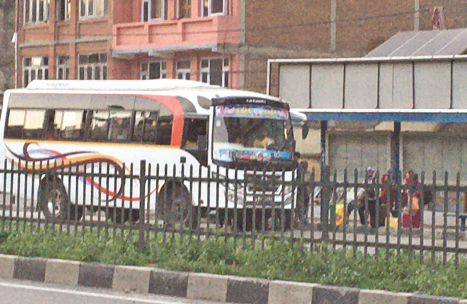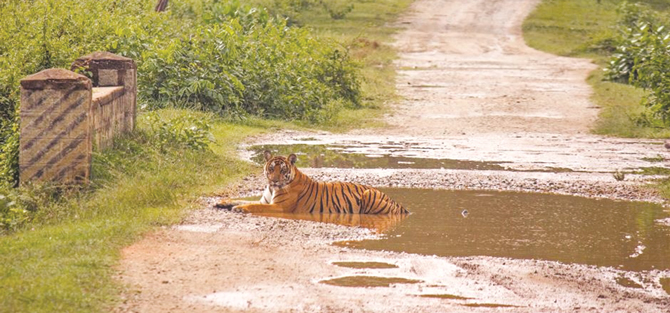Songs of migratory birds make spring sonorous

By Indira Aryal
Kathmandu, May 25: Kafal Pakyo, Biu Kuiyo, Koho-Koho, Gol Simal and Kuhu Kuhu.
These are the songs of the birds we hear when the spring season is on the horizon in Nepal. These sounds are made by the species of birds from the Cuckoo family that arrives in Nepal from South India, South East Asia and the North East States. The birds that have previously disappeared from the view a few months ago start returning to their staging areas from March.
The birds begin to enter the country from the last week of March, and almost all of them reach the country by May.
The arrival of the birds heralds the arrival of the spring season in Nepal, said ornithologist Hem Sagar Baral.
One-and-a-half dozens of species of Cuckoo are found in Nepal. Of them, most are migratory and they arrive during summertime for breeding, he said.
Common hawk cuckoo sings Kafal Pakyo, large hawk cuckoo Gol Simal and Asian Cuckoo Kuhu-Kuhu. Likewise, Biu Kuiyo is sang by common hawk cuckoo and Koho-Koho by Asian Koel.
Baral, who is also Country Head at Zoological Society of London, said all the migratory cuckoo that arrive in Nepal are brood parasite. They trick other birds into raising their young. They sneak their eggs into other parents' nests, which then feed, protect and raise the parasite’s young as foster
parents.
Cuckoos are among the 62 species that arrive in Nepal during summertime to lay eggs and raise their chicks. Others include swifts, bee-eaters, flycatchers and drongo. “This is the time of breeding for summer migratory birds and if they get proper diet and if the surrounding condition is favorable they go for a second brood,” Baral said.
According to Baral, they choose common bird, which are found here in abundance, for brood parasitism. If they choose endangered species of a bird, the population of Cuckoo would also be in danger. They are very clever. People rightly say Cuckoos are clever than crows.
Another interesting part is this: Asian Koel lay eggs in crow’s nest. Male Koel is black like crow, so it gets confused. Male Koel disturbs the female crow by dancing around it, forcing the latter to leave the nest. When the female crow leaves the nest, the female Koel lays eggs in the crow’s nest, leave them there and flees.
Some of these migratory birds come from Sub-Saharan Africa travelling a journey of more than 5,000 kilometres to Nepal. The pied cuckoo, whose journey starts from Sub-Saharan Africa, is the species of Cuckoo that travels the longest distance of all. All migratory birds that come to Nepal every year reach various forests in the Tarai, the hills, and the foothills of mountain areas. They search for special habitat and cleaner environment.
Summer migratory birds are found in almost all areas across the country. They do not depend on wetlands, while half of winter migratory birds do, which is why they are found in wetland areas, mostly in Koshi Toppu Wildlife Reserve, Chitwan National Park, Jagdhishpur Reservoir and Karnali River, which connects Bardiya National Park and Suklaphanta National Park. The rest are forest and grassland birds, so they hardly rely on wetlands.
Birds need special habitats and conservation areas, so they gravitate towards well-conserved areas to breed and raise their young ones. That explains why they are mostly found in national parks and protected areas across the country.
Meanwhile, with the arrival of summer migratory birds, most winter migratory birds have returned to their summer residence.
Recent News

Do not make expressions casting dout on election: EC
14 Apr, 2022
CM Bhatta says may New Year 2079 BS inspire positive thinking
14 Apr, 2022
Three new cases, 44 recoveries in 24 hours
14 Apr, 2022
689 climbers of 84 teams so far acquire permits for climbing various peaks this spring season
14 Apr, 2022
How the rising cost of living crisis is impacting Nepal
14 Apr, 2022
US military confirms an interstellar meteor collided with Earth
14 Apr, 2022
Valneva Covid vaccine approved for use in UK
14 Apr, 2022
Chair Prachanda highlights need of unity among Maoist, Communist forces
14 Apr, 2022
Ranbir Kapoor and Alia Bhatt: Bollywood toasts star couple on wedding
14 Apr, 2022
President Bhandari confers decorations (Photo Feature)
14 Apr, 2022









